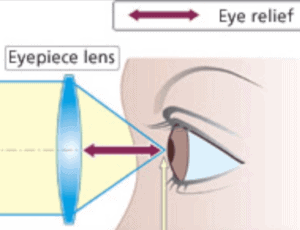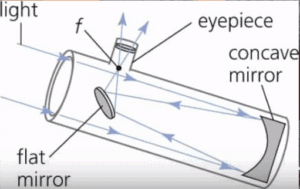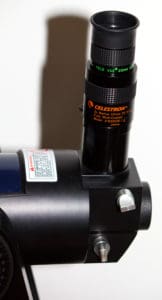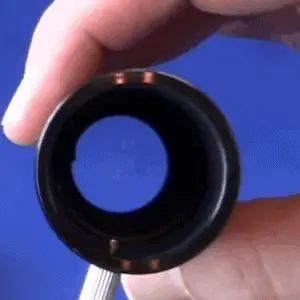For those of us that do astronomy as a hobby, we dream of having the best telescope available in the market to get the most out of our hobby. However, the cost can thwart our plans quickly. Fortunately, there are certain things that we can do to drastically improve our viewing experience without having to break the bank. One way to do this is by using a Barlow Lens.
A Barlow lens is a telescopic accessory that increases the effective focal length, enhancing magnification without losing it in the optical quality of a high-power eyepiece. This allows for closer, more detailed views of celestial bodies without needing additional, expensive equipment.
A Barlow Lens; invented by Peter Barlow (1776-1862), is made up of multiple lenses that have special lens coatings and shape to increase their light transition capability.
How Can a Barlow Lens Effectively Increase Your Eyepiece Collection?
 We already know that it is essential always to have a set of good eyepieces with different magnifications. We need a low powered eyepiece to view larger objects for a wider field of view. On the other hand, we need a high powered eyepiece to view smaller objects like planets for higher magnification. A Barlow Lens can also be handy in this area as it can effectively increase the number of your eyepiece collection.
We already know that it is essential always to have a set of good eyepieces with different magnifications. We need a low powered eyepiece to view larger objects for a wider field of view. On the other hand, we need a high powered eyepiece to view smaller objects like planets for higher magnification. A Barlow Lens can also be handy in this area as it can effectively increase the number of your eyepiece collection.
For example, if you only have a 32mm and a 20mm eyepiece, having a 2X Barlow Lens allows you to double the number of your eyepiece collection by also having the magnification capabilities of a 16mm and a 10mm eyepiece. However, if you have a 10mm, 20mm, and 40mm lenses, a 2X won’t help much. In this case, the magnifications would end up the same as your eyepieces.
What Size Barlow Should I get?
The idea here is to go with a Barlow magnification that increases your lens abilities. Like the example above of having a 10, 20, and 40mm lens set. If you added a 2X Barlow, your 40mm would be the same as your 20mm eyepiece. To expand your viewing capabilities, you should look for a Barlow that is 1.5X or 2.5X. For example let us use a 1.5X Barlow.
Because, this lens would make your 40mm into a 30mm, your 20mm into a 15mm, and the 10mm into a 7.5mm. Thus, by adding 1 Barlow lens, you expanded your eyepiece set to the equivalent of 6 eyepieces. A 40, 30, 20, 15, 10, and 7.5mm effective lens set with the one Barlow. Pretty cool, right?
How Can a Barlow Lens Help with Your Eyepiece’s Eye Relief
Eye relief is defined to be the distance required from your eye to your telescope’s eyepiece to be able to see its full field of view. Using high powered eyepieces requires a smaller eye relief. For example, using a 10mm eyepiece does require you to place your eye very close to your eyepiece to see through it.
 If you are wearing glasses, using a high powered eyepiece can be a huge problem. Also, eye relief is essential so you can avoid having your eyelashes brush against your eyepiece because this can leave streaks of eyelash oils that could need to cleaning during your viewing.
If you are wearing glasses, using a high powered eyepiece can be a huge problem. Also, eye relief is essential so you can avoid having your eyelashes brush against your eyepiece because this can leave streaks of eyelash oils that could need to cleaning during your viewing.
Having a Barlow Lens allows you to use an eyepiece with lower power for its more considerable eye relief and still get the magnification of an eyepiece with a higher power. Pretty cool again, right?
How Do Barlow Lenses Work?
The magnification of telescopes is the focal length of the telescope divided by the focal length of the eyepiece. One way to increase the magnification of your telescope is to use an eyepiece with a smaller focal length, and this is what we do when we use a high powered eyepiece.
A Barlow Lens, however, increases the magnification by effectively increasing the focal length of the telescope instead. Thus, giving us the ability to use a wider field of view for lenses to achieve the same magnification.
There is a rule of thumb when telescope magnification is concerned, Learn About the 50X Rule by clicking here for the 50X article.
 A 2X Barlow lens doubles your telescope’s focal length while a 3X Barlow lens triples it. For example, a 20mm eyepiece on a telescope with a 1000mm focal length gives a magnification of 50. Using a 2X Barlow Lens with this eyepiece creates a focal length of 2000mm thus doubling its magnification to 100x.
A 2X Barlow lens doubles your telescope’s focal length while a 3X Barlow lens triples it. For example, a 20mm eyepiece on a telescope with a 1000mm focal length gives a magnification of 50. Using a 2X Barlow Lens with this eyepiece creates a focal length of 2000mm thus doubling its magnification to 100x.
What Sizes of Barlow Lenses Are Available
Barlow Lenses come in different magnifications: 1.5X, 2X, 2.5, 3X, and 5X for some standard sizes. Some even have screw on lenses that allow for even more diversification and modification. Further, some are made to adapt right onto a DSLR camera. The 4X and 5X Barlow’s are best intended for direct insertion of small chip digital cameras. Like these CMOS cameras from Amazon that fit right where your eyepiece typically goes.
Which Barlow Magnification Is Best?
 It is very tempting to immediately say that a Barlow Lens with a higher magnification is better in the same way that most beginners in astronomy usually think that a high powered eyepiece is always better than a low powered one.
It is very tempting to immediately say that a Barlow Lens with a higher magnification is better in the same way that most beginners in astronomy usually think that a high powered eyepiece is always better than a low powered one.
In astronomy, higher magnification is not always better because of two main reasons:
- A smaller field of view.
- A dimmer image.
The same is the case for Barlow Lenses. A 2X Barlow Lens is the most common sized available because it usually works well with most telescopes. It usually gives a better combination of magnification and image quality and brightness compared to a 3X Barlow Lens.
Learn about what the drawbacks are to a Barlow lens by clicking here.
The Diameter, Or Barrel Size Explained
Before you think and decide about which Barlow lens to use, you must first determine the barrel size of your eyepieces that you intend to use with it.
The most widely used eyepiece barrel size is 1.25”. Some larger telescopes use 2” while cheaper telescopes use the smaller 0.965” size. Whatever the barrel size of your eyepiece, you select a Barlow lens with the same diameter. Learn which ones I like best in 2″ and 1-1/4″ barlows.
What are the Different Types of Barlow Lenses?
Generally, there are 2 types of Barlow Lenses:
- Standard or Long Barlow Lens – are usually 5″ to 6″ in length. They are used primarily in Newtonian reflectors. They have the disadvantage that they cannot be used in all types of telescopes because of their length. They can still be used, however, on telescopes that use a diagonal but it has a risk of protruding too far into the diagonal and damaging the mirror.
- Short Barlow Lens – are about half the length of standard Barlow Lens. Because they are shorter “shorty’s,” they are compatible to be used in any telescope. It uses a stronger negative lens to be able to achieve the same magnification as that with the longer Barlow Lens. Short Barlows tend to introduce additional imperfections to the image quality concerns, mainly lateral color fringing and vignetting.
If you have a telescope compatible with a Long Barlow Lens, then this is the best choice. However, if your telescope is not compatible with a Long Barlow Lens, you have no choice but to use a “shorty” the short type. A good quality Achromatic “Shorty” will work wonders though.
What Makes a Good Quality Barlow Lens?
Different Barlow Lens from different manufacturers can give the same amount of magnification, but what separates a good quality Barlow Lens is the resulting image quality. The optical coatings depend much on the type of and quantity of coatings used on the lenses.
They are ensuring maximum light transition and reducing internal reflections. If you have a chance to look in through the end of a Barlow, it should not be reduced down, or smaller internally. By gyrating it slowly toward a light source, you should not see glares.
Enjoying Your Barlow Lens
Using a Barlow Lens can be as satisfying as having a brand new, more powerful telescope without the huge added cost. However, this is not a magic tool that solves all of your telescope viewing problems and instantly makes your experience perfect.
Astronomy does require knowledge and skill, so practice with your Barlow Lens. Practice makes perfect, so never stop learning about other aspects of astronomy. There are a lot more resources available on this website that can help guide you on the learning curve of this hobby.
Need More?
Check out these articles for more info on using your telescope.


